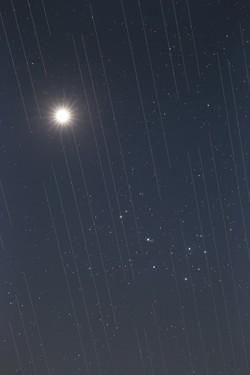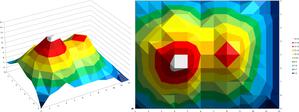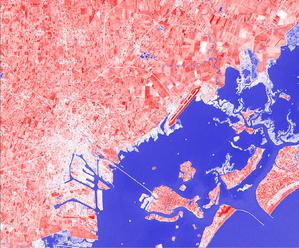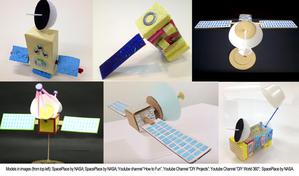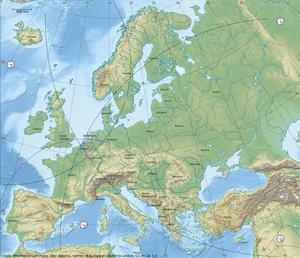Glossary term: Artificial Satellite
Description: An artificial satellite is a human-made device that is sent into space, to orbit Earth or other Solar System objects, where gravity keeps it in orbit. Artificial satellites can be built to perform various tasks including taking aerial photographs of Earth that help meteorologists predict the weather, or taking pictures of astronomical bodies and distant galaxies, which helps scientists to better understand the cosmic system. Artificial satellites are also used primarily for communications around the world and for finding one's position, e.g. the Global Positioning System (GPS). The first artificial satellite was launched into space in 1957 by the Soviet Union, and it was called Sputnik 1.
Related Terms:
See this term in other languages
Term and definition status: This term and its definition have been approved by a research astronomer and a teacher
The OAE Multilingual Glossary is a project of the IAU Office of Astronomy for Education (OAE) in collaboration with the IAU Office of Astronomy Outreach (OAO). The terms and definitions were chosen, written and reviewed by a collective effort from the OAE, the OAE Centers and Nodes, the OAE National Astronomy Education Coordinators (NAECs) and other volunteers. You can find a full list of credits here. All glossary terms and their definitions are released under a Creative Commons CC BY-4.0 license and should be credited to "IAU OAE".
Related Media
Satellite swarm versus night sky beauty, by Torsten Hansen, Germany
Credit: Torsten Hansen/IAU OAE
License: CC-BY-4.0 Creative Commons Attribution 4.0 International (CC BY 4.0) icons
Related Activities
Valleys Deep and Mountains High
astroEDU educational activity (links to astroEDU website) Description: Learn how radar altimetry from satellites works and how to put landscapes on paper.License: CC-BY-4.0 Creative Commons Attribution 4.0 International (CC BY 4.0) icons
Tags: Maps , Earth observation , Sentinel , Copernicus , Remote sensing , Altimetry , Radar Age Ranges: 14-16 , 16-19 Education Level: Middle School , Secondary Areas of Learning: Discussion Groups , Modelling , Social Research Costs: Medium Cost Duration: 2 hours Group Size: Group Skills: Analysing and interpreting data , Asking questions , Communicating information , Developing and using models , Using mathematics and computational thinkingA View from Above
astroEDU educational activity (links to astroEDU website) Description: How do satellites take images of the Earth surface and how do we analyse and use them?License: CC-BY-4.0 Creative Commons Attribution 4.0 International (CC BY 4.0) icons
Tags: Maps , Climate , Landsat , Earth observation , Sentinel , Copernicus , Remote sensing , Vegetation Age Ranges: 14-16 , 16-19 Education Level: Middle School , Secondary Areas of Learning: Social Research Costs: Low Cost Duration: 1 hour 30 mins Group Size: Group Skills: Analysing and interpreting data , Asking questions , Communicating information , Constructing explanations , Developing and using models , Engaging in argument from evidence , Using mathematics and computational thinkingBuild Your Own Artificial Satellite
astroEDU educational activity (links to astroEDU website) Description: Build a satellite to learn what they are made of and their uses.License: CC-BY-4.0 Creative Commons Attribution 4.0 International (CC BY 4.0) icons
Tags: Art , Creativity , Hands-on , Model Age Ranges: 8-10 Education Level: Primary Areas of Learning: Discussion Groups , Interactive Lecture , Modelling Costs: Low Cost Duration: 1 hour 30 mins Group Size: Group Skills: Communicating information , Developing and using modelsWhere on Earth am I?
astroEDU educational activity (links to astroEDU website) Description: How do satellite-based positioning and GPS navigation work?License: CC-BY-4.0 Creative Commons Attribution 4.0 International (CC BY 4.0) icons
Tags: Clocks , Geography , Maps , GPS , Countries , Speed of light , Galileo Age Ranges: 14-16 Education Level: Middle School Areas of Learning: Guided-discovery learning , Problem-solving Costs: Low Cost Duration: 1 hour 30 mins Group Size: Group Skills: Analysing and interpreting data , Asking questions , Communicating information , Constructing explanations , Developing and using models , Using mathematics and computational thinking